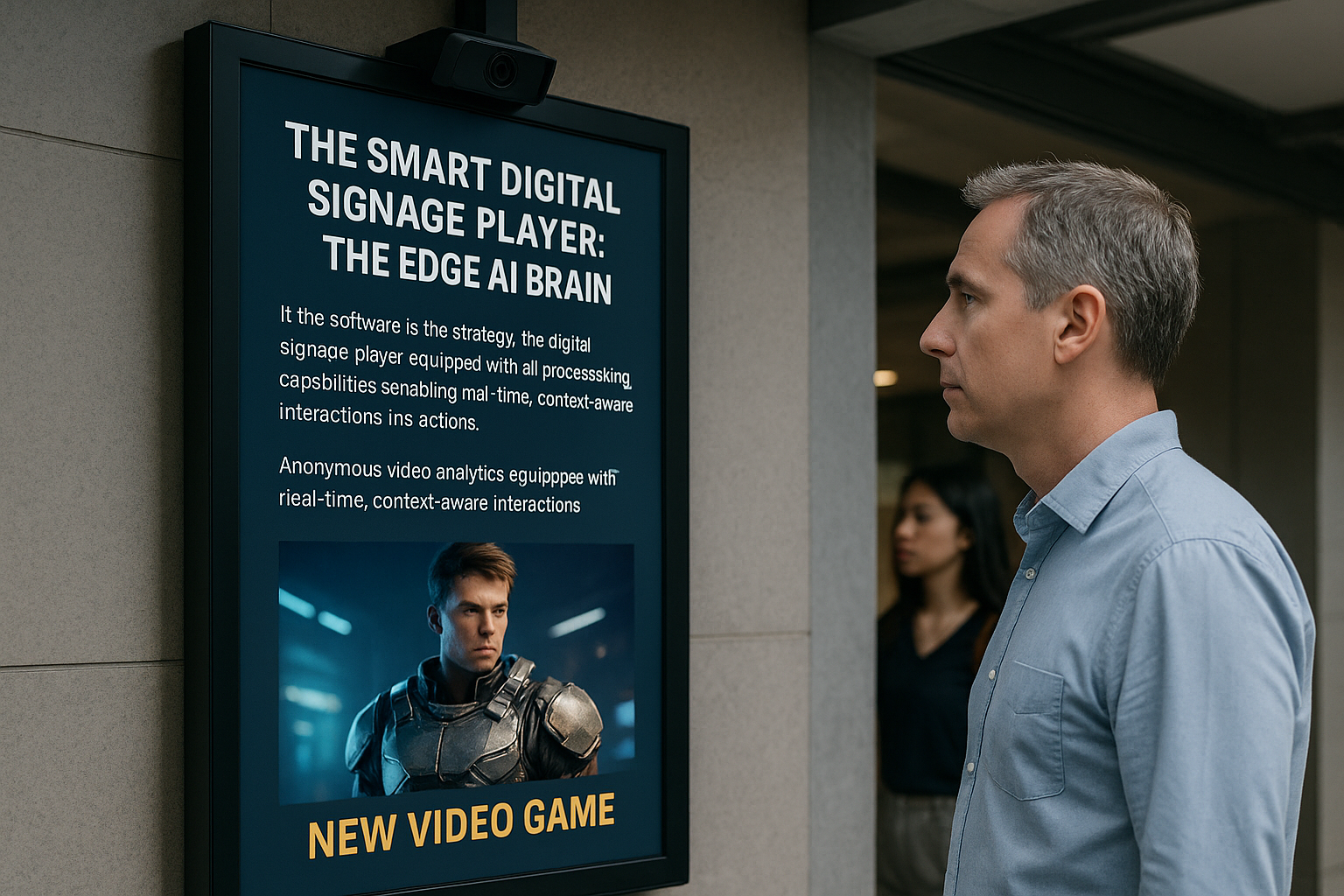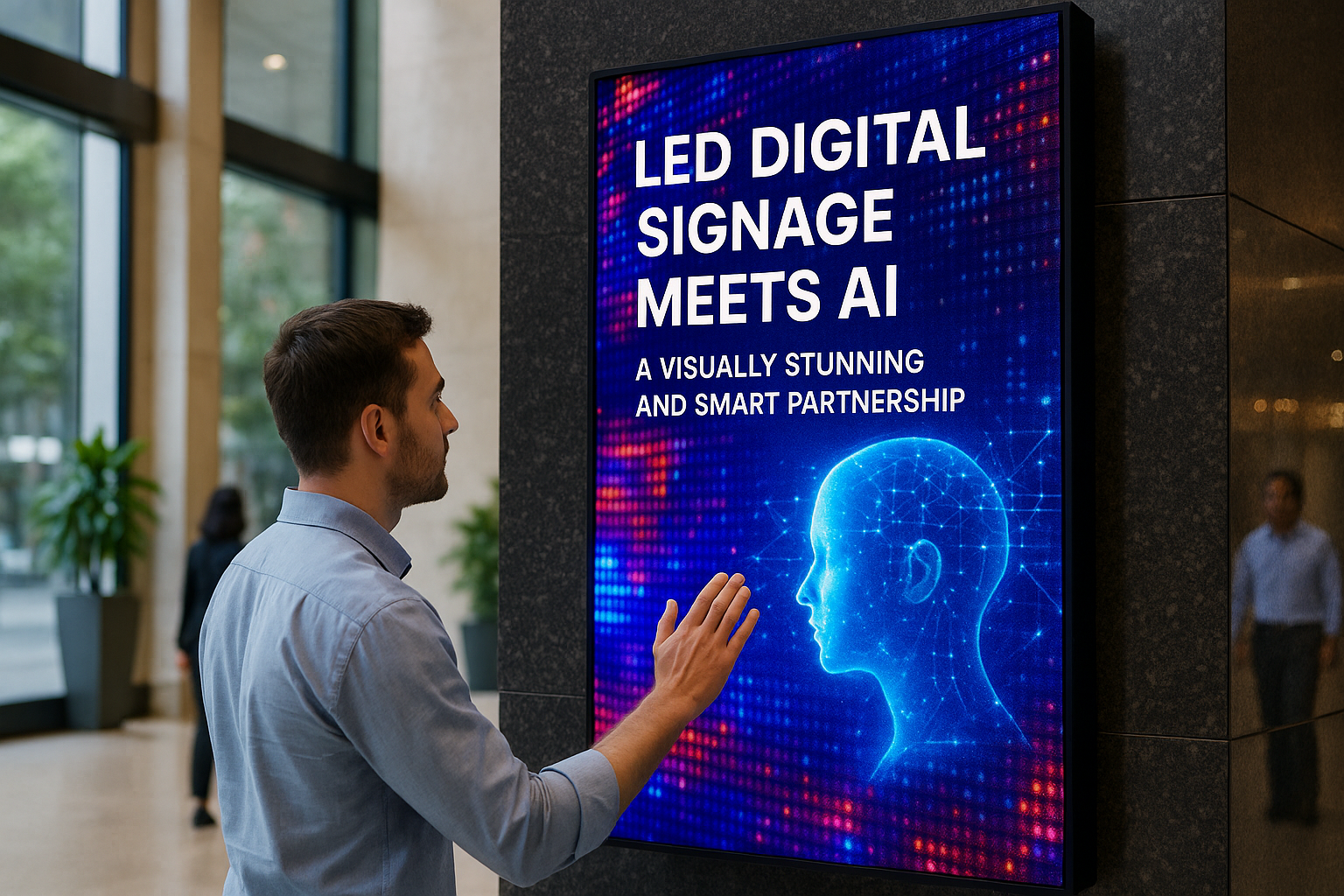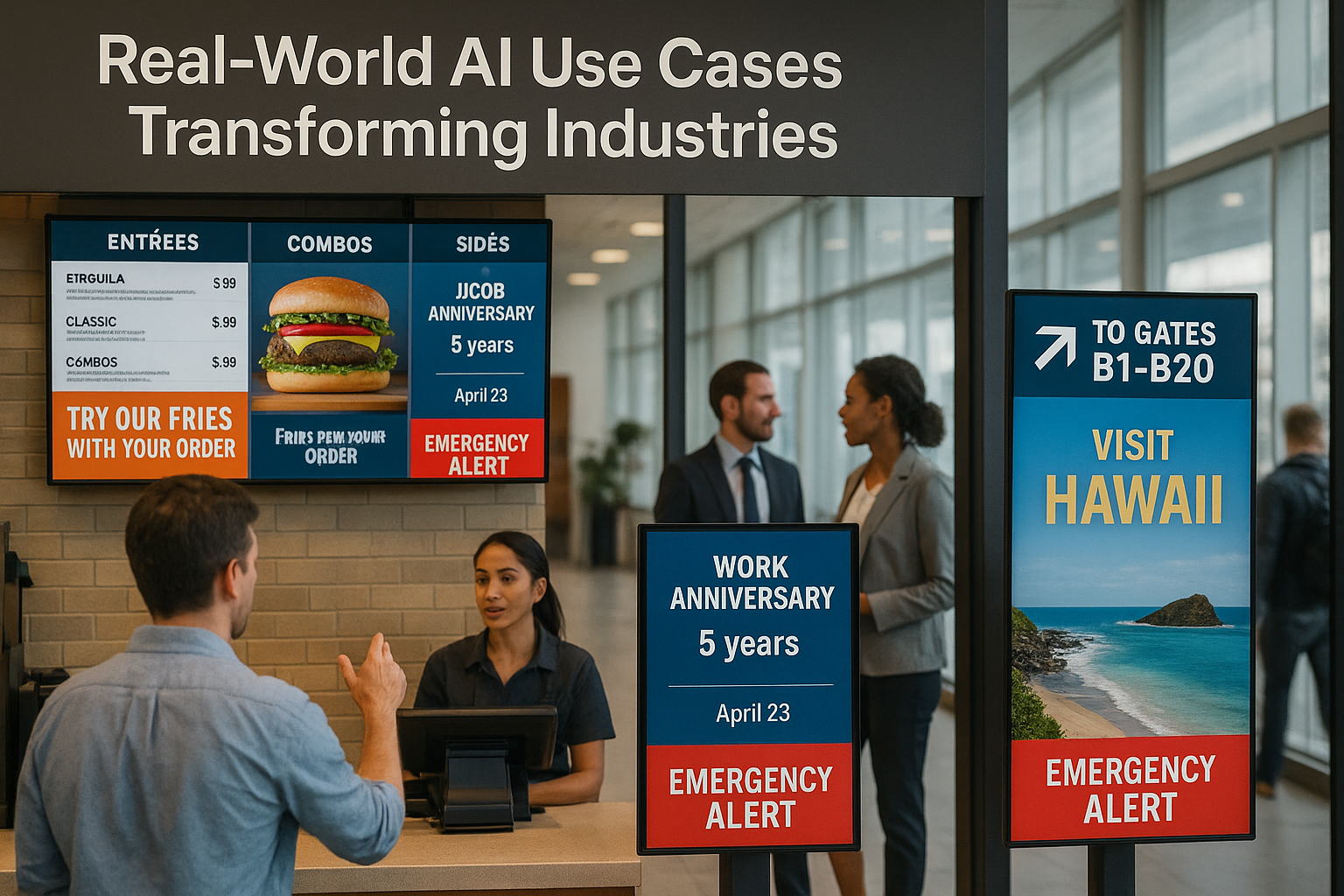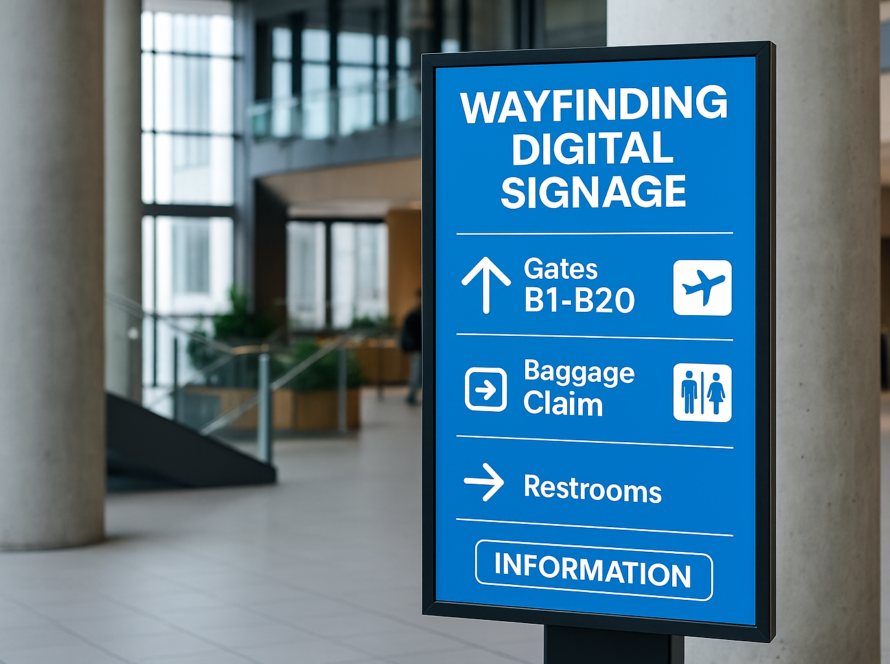
For years, digital signage has been a reliable workhorse for communication. We moved from static posters to dynamic screens, a significant leap that brought motion and timeliness to public messaging. But that evolution is entering a dramatic new phase, powered by the transformative force of Artificial Intelligence. The next generation of digital communication isn’t just about displaying pre-scheduled content; it’s about creating intelligent, adaptive, and highly effective visual ecosystems. AI is fundamentally reshaping the entire stack, from the management software to the hardware on the wall. This revolution touches every component, including your core digital signage program, the crucial digital signage player that powers the display, and the vibrant led digital signage that captures audience attention. Welcome to the future of communication—a future that is happening right now.
The Intelligent Digital Signage Program: Beyond Simple Scheduling

From Manual Playlists to Predictive Content
The most significant shift AI brings to a digital signage program is the move from manual curation to predictive personalization. By integrating with various data sources, an AI-powered system can make real-time decisions about what content to display. Imagine a retail environment where in-store sensors detect a surge in foot traffic in the electronics department. The AI can instantly prioritize ads for the latest headphones on the nearest screens. It can analyze weather APIs and automatically promote hot coffee on a cold, rainy day or ice cream when the sun comes out. This capability extends to internal data as well. An AI can monitor inventory levels and feature products that are overstocked or automatically remove promotions for items that have sold out, ensuring the digital signage is always accurate and effective.
Furthermore, AI algorithms can analyze historical engagement data to predict which content formats, colors, and messages will perform best at certain times or with specific demographics. This moves your content strategy from guesswork to a data-validated science. The system learns and adapts, continuously optimizing its own performance to maximize engagement and ROI. This autonomous optimization is a cornerstone of the next-generation digital signage program, saving countless hours and dramatically improving campaign outcomes.
The Smart Digital Signage Player: The Edge AI Brain

If the software is the strategy, the digital signage player is the brain executing it on the front lines. Historically, these small media devices were simple workhorses; they received a content file and played it on a loop. They were followers, not thinkers. Today, the modern digital signage player is being reimagined as a powerful edge computing device, equipped with AI processing capabilities. This shift means that critical data analysis and decision-making can happen directly on the device, rather than in a distant cloud server. This “edge AI” approach enables instantaneous, context-aware interactions that were previously impossible.
The primary driver of this evolution is anonymous video analytics (AVA). By equipping a digital signage player with a simple camera and AI software, the device can analyze the immediate audience without ever recording personal data or violating privacy. It can determine the approximate number of viewers, their dwell time, estimated age ranges, and even their general mood (e.g., happy, neutral). A smart digital signage player uses this real-time data to trigger content changes on the fly. For instance, if a group of teenagers approaches a screen, the content could instantly switch from a luxury watch ad to a promotion for a new video game. If the system detects long dwell times, it might display more detailed, information-rich content. This responsiveness makes the digital signage feel more relevant and personal, capturing attention far more effectively.
LED Digital Signage Meets AI: A Visually Stunning and Smart Partnership

Dynamic Optimization and Immersive Interactivity
One of the most practical applications of AI with led digital signage is dynamic environmental optimization. An AI-connected sensor can measure the ambient light of the surrounding area and automatically adjust the screen’s brightness. This means the display is perfectly visible on a bright, sunny afternoon but will dim to a comfortable, energy-saving level in the evening. This not only improves the viewer experience but also extends the lifespan of the hardware and reduces operational costs. The AI can also adjust color profiles to ensure brand consistency and visual pop under any lighting condition.
Beyond optimization, AI unlocks new frontiers of interactivity for led digital signage. Imagine a large LED video wall in a corporate lobby. Using gesture recognition, a visitor could wave their hand to navigate through an interactive company history. In a flagship retail store, a customer could pick up a product, and the AI-powered screen behind it could instantly display product information, customer reviews, and coordinating accessories. This creates a “phygital” experience, blending the physical and digital worlds into a seamless and engaging journey. The visual impact of led digital signage provides the canvas, and AI provides the intelligence to make that canvas react to the world around it.
Real-World AI Use Cases Transforming Industries

The fusion of a smart digital signage program, an intelligent digital signage player, and adaptive led digital signage is not a far-off concept; it is actively delivering value across numerous sectors today.
In Quick-Service Restaurants (QSR), AI-driven digital menu boards are becoming the standard. These systems optimize themselves by promoting high-margin items during peak hours, integrating with inventory to remove sold-out items, and even using suggestive selling based on a customer’s current order. In corporate communications, AI can pull data from company systems to automatically celebrate work anniversaries, display real-time progress toward team goals, and post emergency alerts without manual intervention. In transportation hubs like airports and train stations, AI-powered wayfinding can dynamically update routes based on crowd congestion, while advertisements on surrounding screens can be tailored to travelers based on their destinations. This level of automation and relevance makes the entire digital signage network more valuable and efficient.
The Future is Automated and Personalized
Looking ahead, the integration will only grow deeper. The rise of generative AI promises to automate content creation itself, allowing a digital signage program to generate ad copy or simple graphics based on a few prompts. Further integration with the Internet of Things (IoT) will allow screens to react to even more environmental triggers, from temperature changes to security alerts. The ultimate goal is hyper-personalization, where a display can deliver a truly one-to-one message, creating a unique experience for every single viewer. This is the new benchmark for effective communication.
The journey of digital signage has been remarkable, but the introduction of Artificial Intelligence marks the beginning of its most exciting chapter. By transforming the digital signage program into an intelligent automation hub, evolving the digital signage player into a real-time analytical brain, and enhancing the visual power of led digital signage with adaptive intelligence, AI is setting a new standard for communication. Businesses that embrace this change will move beyond simply broadcasting messages and begin creating truly dynamic, responsive, and engaging experiences that build connections and drive results.



